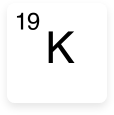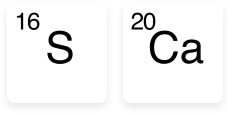
Phosphorus
With Australian soils naturally low in phosphorous, introduced plant species heavily rely on the supplementation of quality phosphorous products such as super, D.A.P. and M.A.P to aid plant metabolism and early root development.
Super
Features
- SSP is one of the cheapest forms of phosphate
- Both the phosphorus and sulphur are in readily available forms. Supplies sulphate sulphur and calcium.
- The ratio of phosphorus and sulphur suits many crop and pasture needs.
- Can be blended with other fertiliser products
- Can be stored easily for long periods, without taking up moisture.
- Contains calcium and sulphur (mostly as gypsum) and helps keep soil in good shape by maintaining soil structure.
- SSP provides a balance of P, S and Ca that mimics pasture growth requirements and is the best balanced P, S and Ca fertiliser for Australian pastures.
How is Super manufactured?
Single Superphosphate is produced by reacting naturally occurring phosphate rock with sulphuric acid. This process converts insoluble phosphates into forms more readily available to plants.

SSP manufacturing process uses blends of various rock phosphate rock sources. Critical steps in the process include:
- Grinding the Phosphate Rock to the correct size
- Accurately metering the Phosphate Rock, Sulphuric Acid, and water
- Mixing together thoroughly
- Time for the reactions to occur
The reacted material is fed into a granulation drum and across a screening process to produce granulated Single Superphosphate.
The Single Superphosphate is then stored for a period of weeks to allow further reactions to occur within the product to maximise the proportion of available phosphate in the commercial product. The cured Single Superphosphate is dried and screened prior to dispatch.
Uses
The product is a low cost source of phosphorus and sulphur in a wide range of pasture situations. SSP is a traditional product for supplying phosphorus and sulphur to pastures, the main two nutrients required for pasture production. Generally mixed with Sulphate of Ammonia and Muriate of Potash, but can be blended with other fertilisers.
Typical Analysis

D.A.P.
Features
- High analysis source of phosphorus.
- N:P ratio of 1:1 makes it an effective source of nitrogen.
- DAP releases free ammonium. Nitrogen in the ammonium form resists leaching and is a slower release form of nitrogen.
- The free ammonium gives a higher pH reaction immediately around the granule.
- The low cost of nitrogen in DAP makes it a cost effective source of nitrogen if Phosphorus is also required.
Uses
D.A.P is one of the major cropping fertilisers used in Australia, as a source of both phosphorus and nitrogen. The high phosphorus content makes it a true high analysis fertiliser. D.A.P blends are used on a range of crops in broad-acre farming, cereals, sugar cane, sowing pastures, dairy pastures, fodder crops and also in horticultural crops; for example, vegetables and tree crops.
Typical Analysis

M.A.P.
Features
- MAP is a high analysis source of phosphorus.
- A cost effective granular product.
- Low in heavy metals.
- Good handling characteristics.
- The nitrogen in MAP is in the ammonium form, which resists leaching and is a slower release form of nitrogen.
- The product has an acid reaction in the soil which can be an advantage in neutral and high pH soils. Therefore MAP is used in preference to DAP on alkaline soils.
Uses
M.A.P is one of the major cropping fertilisers used in Australia, as a source of phosphorus and nitrogen. M.A.P blends are used extensively in cropping systems and for sowing pastures. The low level of nitrogen makes it useful as a ‘starter’ fertiliser and as there is no free ammonia, the risk of affecting germinating seeds is minimal.
Typical Analysis


 About Us
About Us
 History
History
 Team
Team
 Careers
Careers








 Farm Mapping
Farm Mapping
 NPKS Reporting
NPKS Reporting
 Agronomy
Agronomy
 Soil Testing
Soil Testing
 Bin Delivery
Bin Delivery
 Spreading
Spreading
 Blending
Blending